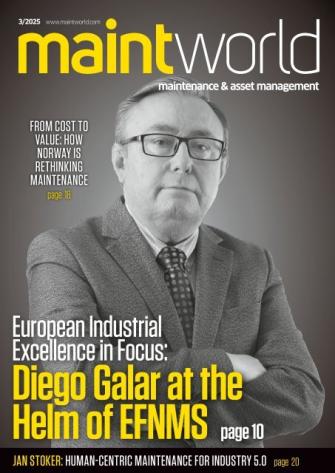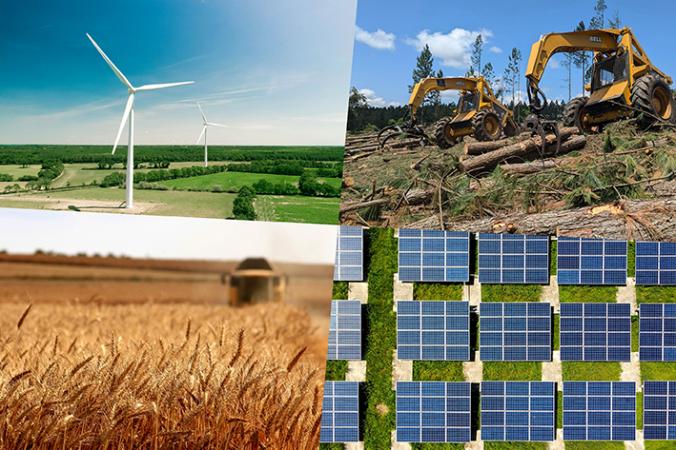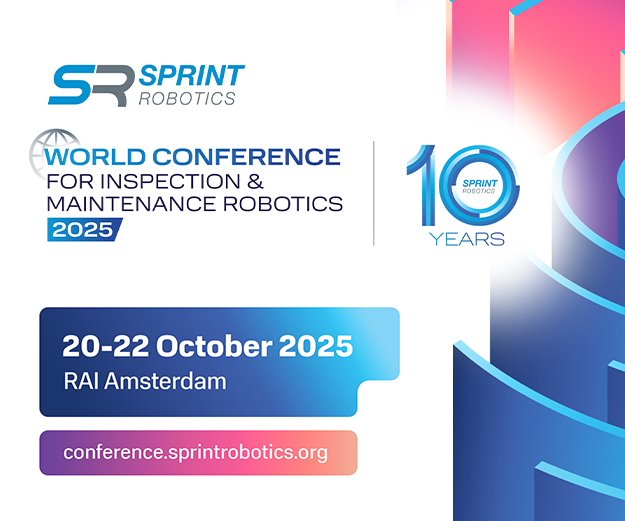Solving the impossible problem of surging methane emissions
The year is 2020. Billions of people across the globe sit in lockdown as scientists desperately try to find a cure to the pandemic that has brought the world to a standstill. And sustainability – until the pandemic hit, the defining megatrend of our time – is largely pushed out of the headlines. Flights are grounded. Manufacturers shutter their factories. Daily commutes and school runs stop dead, almost overnight. And methane emissions continue to rise.
It is a finding that seems to defy common sense. Even as industries like oil and gas exploration and air travel slow to a crawl, the amount of methane - one of the most potent greenhouse gases (GHGs) in existence – in Earth's atmosphere surges. Measurements over South Sudan show methane levels jump from around 1,840 ppb in late 2019 to a peak of over 1,910 ppb at the end of 2020[1]. It is a puzzle that will take over two years to solve – which brings us to 2023, and the troubling findings that reveal methane emissions as an even more insidious threat than previously thought.
The mystery of methane
It is understandable why it has taken researchers over two years to explain why this sharp rise of methane into the Earth's atmosphere, even as most of the world seemingly ground to a halt. Indeed, emissions of carbon dioxide – a similarly notorious GHG which, while significantly less potent than methane, is also much more abundant – did fall as the world's heavy industries wound down, as expected.
The answer is that, while anthropogenic (human-caused) methane emissions did fall in line with the world's reduced natural gas consumption, natural emissions did not. Emissions from wetlands, caused by biomass breaking down and methane-producing algae, among other naturally-occurring phenomena, rose by the highest amount since records began.
These findings, published in the Nature journal, paint a troubling picture. A kilogram of methane emitted into the atmosphere can trap more than a hundred times more heat than a kilogram of emitted CO2. This is because methane's molecular structure can absorb more energy than CO2 and because methane forms other greenhouse gases in the atmosphere, most notably in the tropospheric ozone.
Much of this methane comes from microbes in wetlands. As these microbes break down biomass and reproduce, they produce methane. A warm, wet climate across large parts of the northern hemisphere meant there were more of these wetlands than ever before in 2020 – and there will continue to be more in future.
Further complicating this picture is the finding that burning fossil fuels can actually help control the amount of methane in the atmosphere. It sounds counter-intuitive, but the Nature Journal paper details how the burning of fossil fuels creates nitrogen oxide, which produces hydroxyl radical molecules when it enters the atmosphere. These molecules break down methane, meaning the reduction in fossil fuels consumed during 2020 – perversely – actually allowed methane concentrations to increase.
The point of all this is not to take a defeatist stance, nor is it to absolve heavy polluters of responsibility. Indeed, global warming is creating more wetland regions as permafrost around the polar regions thaws. The rapid thaw is causing giant craters to form in the earth, creating pockets of waterlogged marshland known as thermokarst, which provide even more habitats for methane-emitting microbes to thrive.
The point is that simply cutting methane emissions is much more complex than it sounds. The solutions to this problem are multi-layered, confusing, and often contradictory. Simply plugging leaky pipelines and limiting agricultural emissions, while important, is not enough to stop the vicious cycle of increasing methane emissions. Trying to navigate this already perplexing landscape without a solid foundation of accurate, up-to-date data to inform the right route forward is like trying to find a shadow in the dark – frankly, it is impossible.
Lasting the distance with data
It is incumbent on all industries – particularly those that produce a lot of emissions, like oil, gas, and agriculture – to come to an agreement on several things. This is a global issue, and so it requires a global consensus to solve.
But how can anyone reach a consensus without the capacity to describe what needs to be done? Methane emitters already face significant challenges in abating emissions - originating from a range of regulatory, financial, and structural factors.
Awareness is low compared with CO₂, and methane emissions are tough to measure and track.
Yet data on methane exists already – all businesses need to do is utilise the tools to collect it. This is the power data gives us – it empowers decision-making by allowing us to quantify the effectiveness of our actions. As the lines between human-caused emissions and natural emissions become increasingly blurred, understanding the delicate interplay between humanity and the planet we live on becomes crucial.
The sensing technology required to achieve this is not some far-off concept – it is available today and is more affordable and accessible than ever. Any company can monitor its industrial gas usage and emissions, providing researchers with a valuable understanding of the true impact humanity's actions have on our planet.
Laser absorption spectroscopy
Laser absorption spectroscopy is arguably the most powerful tool for promoting this understanding as it has a particularly big role to play in tackling methane emissions. Methane is such a potent GHG because its molecular structure means it absorbs infrared light emitted from the Earth's surface, trapping heat in our atmosphere. This property makes it a prime target for highly sensitive infrared spectroscopy sensors.
This form of detection is based on how light is absorbed as it passes through a medium. Emitters within the sensor generate beams of IR light which pass through a sampling chamber containing a filter. The filter only allows the required wavelengths – the ones reflected or emitted by the particles of gas being monitored - to make it past, meaning only those wavelengths can reach the detector. Different filters allow different wavelengths of light to reach the detector, which can, in turn, be used to detect different gases and distinct particles.
Newer gas analyser instruments use a laser diode mounted on a thermo-electric cooler to tune a laser's wavelength to the specific absorption wavelength of a particular molecule. They exploit their high-frequency resolution, which results in enhanced sensitivity - more significant levels of interaction between gas molecules and light in the order of parts per billion - and discrimination, as they are tuned to specific gas compounds. This lowers the risk of false alarms, which can become a serious issue with other common gas detection technologies.
The benefits of these sensors include fast response times and accurate results without using any additional gases to operate.
Modern detectors can now continuously monitor for combustible gases and vapours within the lower explosive limit and provide alarm indications. These can be deployed within oxygen-deficient or enriched areas, require little calibration, and are immune to sensor poison, contamination, or corrosion.
Breaking the vicious cycle
Industrial gas detection is a mature market that continues to expand as devices become cheaper at the compliance end of the market and smarter at the top end. On the one hand, at Umicore, we work with OEMs stripping their devices back to basics, focusing on functionality and cost for low-cost markets. On the other, we assist in driving advances to open up new opportunities and allow end users to use their devices in ways they haven't considered before.
By embracing data and taking precise, informed action, industries, legislators, and consumers can all work together to help break the feedback loop of emissions driving further emissions.
There are some methane emissions humanity simply cannot control. Accepting this makes it all the more vital that we do what we can to drive down the emissions we can control. But to do that, we must first have the capacity to identify and understand where these emissions are. Only then can we reckon with the vicious cycle of methane emissions – and finally crack it once and for all.
Text: Mark Naples, Managing Director of Umicore Coatings Services
Images SHUTTERSTOCK






![shutterstock_1639116079-[Converted] shutterstock_1639116079-[Converted]](/var/ezwebin_site/storage/images/media/images/shutterstock_1639116079-converted/71094-1-eng-GB/shutterstock_1639116079-Converted.jpg)



![EMR_AMS-Asset-Monitor-banner_300x600_MW[62]OCT EMR_AMS-Asset-Monitor-banner_300x600_MW[62]OCT](/var/ezwebin_site/storage/images/media/images/emr_ams-asset-monitor-banner_300x600_mw-62-oct/79406-1-eng-GB/EMR_AMS-Asset-Monitor-banner_300x600_MW-62-OCT.png)




